City Hall was a lauded public building when it was built in 1964, with wood fins symbolizing Oregon’s connection to the forests, a very public terrace and a design that bubbled with democratic values and encouraged a connection between government and citizenry that wasn’t dominated by an imposing tower.
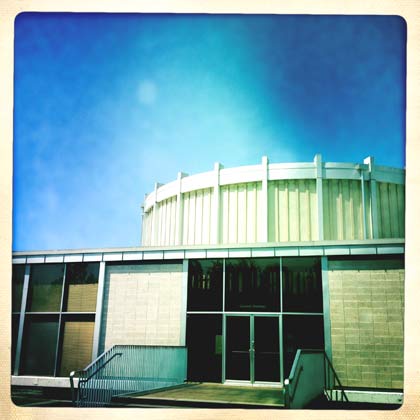 |
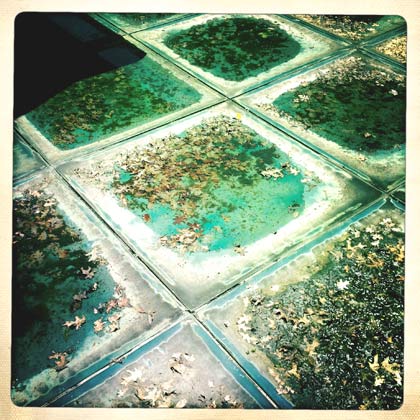 |
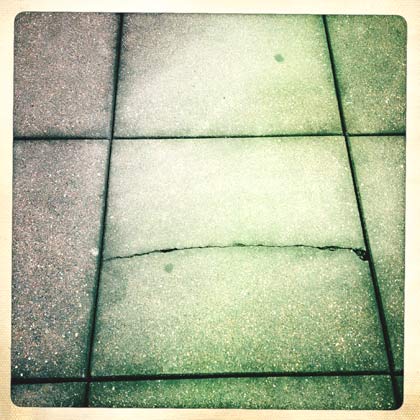 |
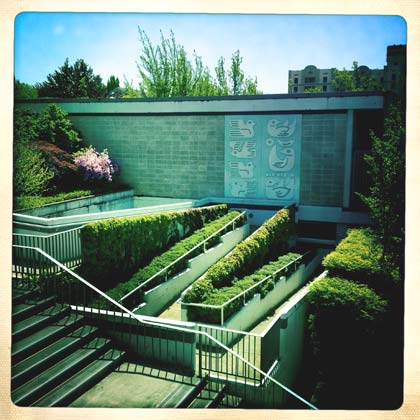 |
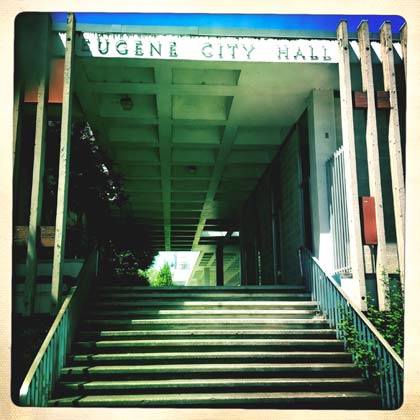 |
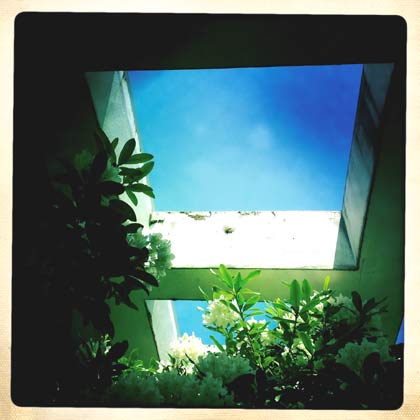 |
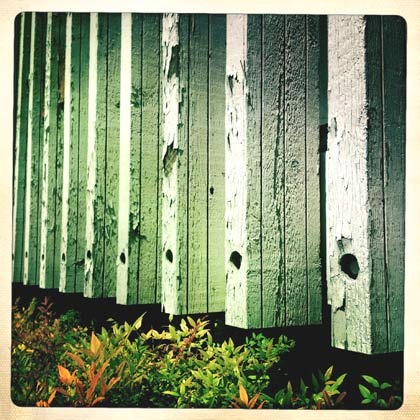 |
| Photos by Sarah Decker |
But after years rusting in the garage, Eugene’s own City Chitty Bang Bang might be razed rather than remade into something special.
Earthquake issues (aka seismic inadequacies) plus the end of steam heat and a decade without structural (or even cosmetic) maintenance mean the building, as it stands, has to go. Now the Eugene City Council faces an as-of-yet-unscheduled decision: Knock down City Hall and build a new one, or strip the structure to its skeleton, repair it and rebuild an improved version?
Because City Hall is no magic car, and the issue of what to do with it is too tough a decision without an in-depth study, the city formed a citizens’ committee to examine its options. Between budget, square footage, sustainability and historical value, a rebuilt city hall seems like a winner, without the risks and unanswered questions that would come with a partnership with a developer. And yes, it could even be a pretty City Chitty Bang Bang again.
Two teams of architects created reports on both rebuilding and building new, then adjusted them based on citizens’ committee feedback. These studies don’t hold all the details of what exactly would be built under each scheme; they are merely the committee’s conceptualizations, created to help City Council make a decision based on real information before it moves forward by commissioning real plans.
Beauty & The Pits
Kevin Matthews, editor of ArchitectureWeek, says that the spirit of Eugene City Hall’s original design is lost under peeling paint, and that renovations have obscured the original design, making it feel less open and as if it’s lost its entry marker. Matthews says a rebuild of City Hall would be an example of what’s known as a re-skinning, where the aesthetics are stripped of “messy things that have happened over time” and beautified in new ways that are more in keeping with the original design. “Some of the most exciting spaces to be in are old spaces that have been updated so that there’s an interplay between old materials and new materials,” he says.
David Mandelblatt, a Downtown Neighborhood Association member who participated in the citizens’ committee, says that although the new building was an attractive option, he favors rebuilding the historic structure with modifications to make it more open from a street perspective. Mandelblatt says that creating more square feet inside City Hall is the best use of limited dollars, adding that taking the risk of having something created by developers which could be left aesthetically unfinished troubled him. “I felt, and I think that other people did as well, that we’d actually get a fuller product sooner,” he says of the rebuild. “And that was important.”
Paying for “shelled space” now — space that appears finished on the outside, with the interior just finished enough to rent or finish later — was also an attractive option to Mandelblatt. He prefers it to developing more space in the future with funds that might never come, while also spending money on office rent for other city departments downtown. He says the rebuilt space could house either retail or city staff when their current leases run out in the next decade. “I see it as a plus because it gives you flexibility for the future,” he says.
Mandelblatt says that one of the principles guiding his thought process was ensuring that the space would be used to its best potential. He says he doesn’t think leveraging the space with a developer for retail or office space should trump using it for city staff and public meeting space. “More competition for space, with so much new space just created, that makes me nervous,” he says. “I’m afraid of a failure. Downtown deserves better.”
According to Matthews, there’s another benefit to re-skinning: sustainability.
Concrete Green Machine
“When you take a concrete structure like we have at City Hall and put insulation on the outside of that concrete, then you already have a really good start at making an efficient and comfortable building, particularly for a climate like ours that has relatively neutral temperature swings,” Matthews says. The concrete behaves as a part of the interior of the building and acts as free insulation itself, he says.
This would be an incredibly expensive thing to do from scratch, and Matthews says that’s part of why using the existing building proves to be energy efficient, as well as providing a unique architectural style that wouldn’t be built today due to the cost of the concrete frame. “There’s no fundamental reason that you can’t take that building and create a super efficient building energy-wise,” he says.
“The bottom line is that it’s not sustainable to tear down a building with a good existing structure just to build a new building for the same purpose,” Matthews says. “That’s just completely unsustainable.”
The rebuild option presented to the citizens’ committee also contained plans to build a roof on the 7th Avenue side that could accommodate a solar array in the future.
The build-new option, according to the study, would minimize energy use by being compact, thin and oriented east-west to use daylight.
Bang for the Bucks
For a budget of $11 million — that’s the contents of the city’s replacement fund — either scheme is buildable, but which gets the public a better bang for its bucks? Estimates from the committee showed that the demolition phase would be nearly identical for the rebuild and build-new options, so the financial starting point is essentially the same for both options.
The final product of the least expensive option for the rebuilt City Hall (three sub-options were created by Poticha Architects) occupies the same space, with a changed façade. Instead of being closed from the public, the side of the building that faces 8th Avenue would be demolished, making the potentially beautiful council chamber visible. Both floors would be connected to the street.
In total, this option would create 22,585 square feet of space that could be immediately occupied, with 31,850 square feet of shelled space rentable to businesses or reserved for city finishing later. This phase would be followed by occupation by departments that currently have long-term leases in other buildings around town.
The build-new option (the architect, Rowell Brokaw, created three sub-options) would result in a two- or three-story building of 24,500 sq. ft., with some park space and room left over for future expansion or to sell or leverage with developers. Both options would be seismically stable and would come from existing funds set aside over the years for a new City Hall.
Mike Penwell, the city’s design and construction manager, says that the citizens’ committee expressed slight differences for one option or another, though members didn’t take a formal vote. “At the end we felt pretty much unanimously that we had two good options and that whichever way we went we could be successful if we did it right,” he says. “I figured it would be a split group, but it was pretty much across the board.”
What the committee decided, according to Penwell, was that the best option would depend on the philosophy and priorities of City Council, not the designs themselves. From the financial perspective, Penwell says, using city funds exclusively would probably result in the rebuild option. “I think that if we’re going to do it with our own resources and no outside help, just a standalone city project, probably some sort of major renovation makes the most sense because it can be done incrementally and probably at a lower overall cost,” he says.
On the other hand, Penwell says that a new building would be preferred if the council decides to partner with developers and build office or retail space. “For example,” he says, “a new scenario might reserve a relatively small part of the existing full-block site for City Hall and the rest might developed for other things in conjunction with developer, but it could also provide future expansion space for us.”
Historical Value
Andrew Fisher, who volunteers on the Historic Review Board and with the Friendly Area Neighbors, also served on the citizens’ committee. He says that he strongly favors a rebuilt City Hall because he sees value in the current building that money couldn’t replace, and some people might not see that because they’re not accustomed to thinking of buildings from the ’50s and ’60s as historically valuable architecture.
“In a period where we’re undergoing a lot of development, which is vital and necessary, I think that we need to be mindful of what we’re losing,” Fisher says.
Both Fisher and Matthews say that City Hall is an important example of modern architecture, and Matthews says it might be the most important example of that style in Eugene. Opening up the south side to 8th Avenue with a grand staircase that highlights the council chamber and interior courtyard would go a long way to creating a more inviting space, Matthews says, while not eliminating a piece of Eugene’s history.
“No city has torn down as many of its historic buildings as Eugene has,” Matthews says, comparing classic buildings to classic cars. “We have to stop tearing down at the jalopy phase.”
The city’s previous City Hall was torn down after the current building was completed.
Fisher also says the interior courtyard has a Zen garden-like feel, but even as a preservationist he would accept changes to make the design more inviting.
“Given a choice between completely tearing it down and a thoughtful rebuild, I would embrace the thoughtful rebuild,” Fisher says. “Our significant local buildings and landmarks are a finite resource that merit conservation at best or some form of sympathetic rebuild when appropriate.”
Wild Card
Mayor Kitty Piercy says that while City Council voted last year to consider only staying at its current site for now, that could result in a re-vote and possible change. There’s a wild card on the horizon, and that wild card is the Eugene Water and Electric Board (EWEB). Piercy says that right now, EWEB intends to move out of its riverfront building, which she thinks could end up being a good site for City Hall.
“If I had my way, I’d say ‘stay there’ to EWEB,” Piercy says. “If not, that presents us with other issues and other possibilities.” She says that because of its location on the river and heavy public use, she thinks the public would prefer that it remain a public building. But what about other public options for the site? And what does that mean for 777 Pearl?
Piercy says that whatever the City Council decides, she hopes it ends up improving downtown. She says she doesn’t want to leave City Hall with its future undecided. “I think we need to tell the public where we’re going pretty soon, because I’m of the belief that before you move, know where you’re going,” Piercy says.
Moving Forward
Even with the completion of two long, detailed planning documents plus a wild card, more is undecided about the future of City Hall than is decided, and no work sessions or hearings were on the council’s agenda as of press time.
City Manager Jon Ruiz says that once City Hall is vacated this summer, staff intends to come back to City Council and show them the work on both concepts, then work with the council to develop a decision process. “We would go through a regular design process like we would for any building,” Ruiz says. “That would entail hiring an architecture firm, and they would go through a design process that would take probably 12 months before we’re ready to start construction.”
DNA member Mandelblatt says that even as the council tries to find a means of moving forward, it shouldn’t make bets on being able to meet the needs of a downtown that’s changing so rapidly, thereby running the risk of creating more unoccupied space.
Mandelblatt recounts all of the changes happening due to new development and the expected influx of almost 1,500 new downtown residents. “Let’s take a breath, get that stuff put in and see what happens,” he says. “That’s a huge change, it’s a culture change, it’s a philosophical change, maybe. Just take a breath, let’s see where we wind up.”
The build new and rebuild studies are available at http://wkly.ws/1a7
GreatBuildings.com has images of City Hall taken in 2004 at http://wkly.ws/1a8
Contact the mayor and city council to comment at mayorcouncilandcitymanager@ci.eugene.or.us